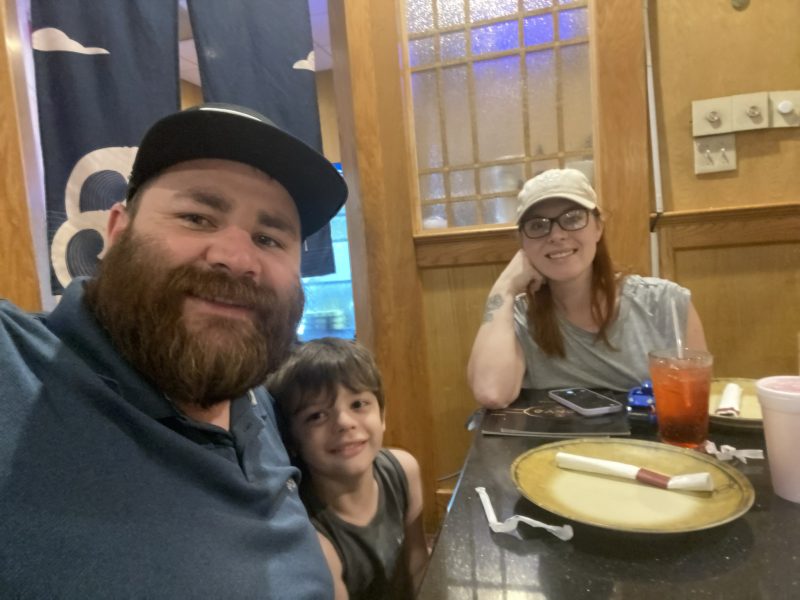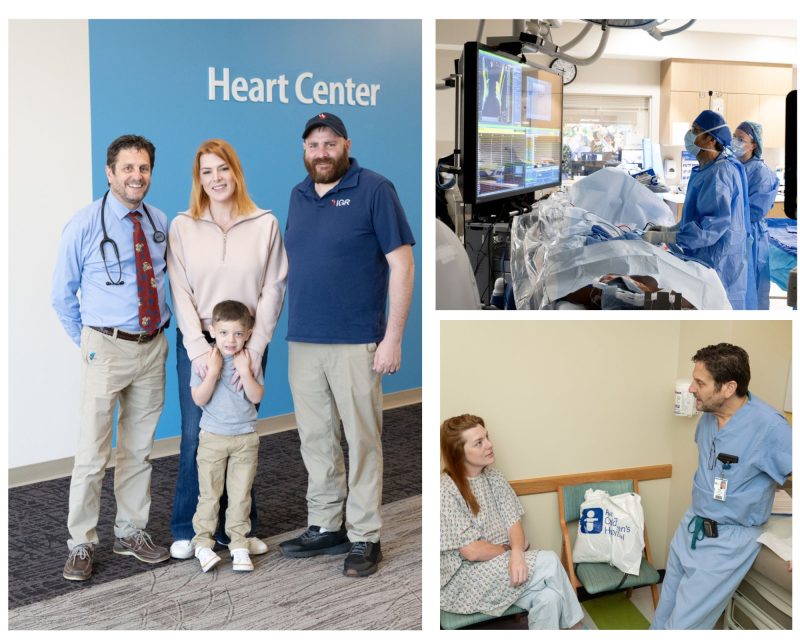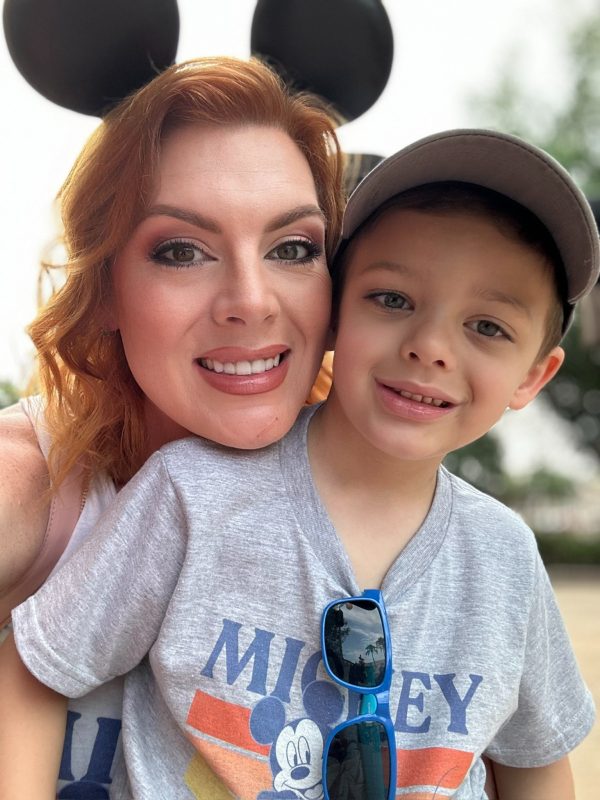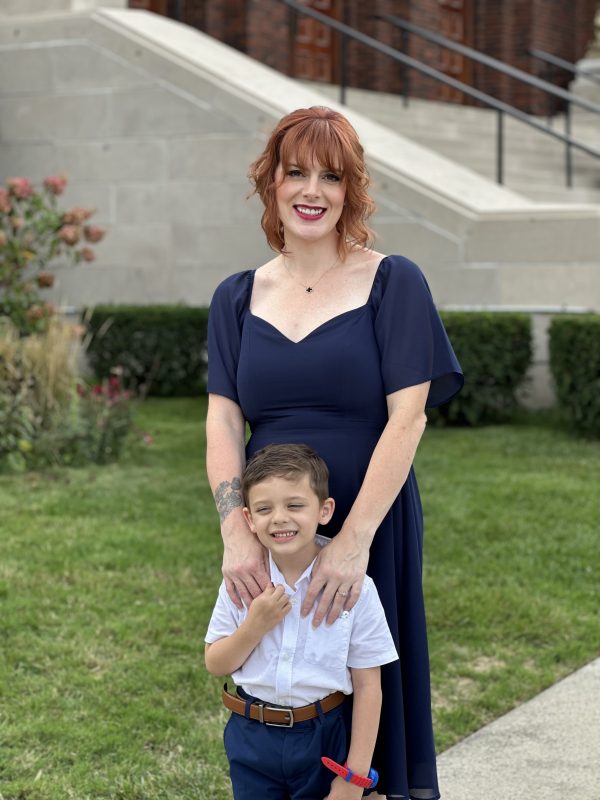
In 2023, Laura Montoya (pictured with her husband and son) began experiencing debilitating symptoms that were robbing her of her quality of life.
Twenty twenty-three turned out to be a year of unimaginable challenges for 39-year-old Laura Montoya. In March, her husband, Monty, a former Marine, stepped on a landmine while volunteering in Ukraine, losing a foot. As she navigated the aftermath of Monty’s traumatic injury, which required multiple trips to hospitals overseas and a move from Las Vegas back to Ohio to be near family, Laura found herself grappling with severe health issues of her own.
“I was so exhausted,” she recalled. “I couldn’t get off the couch. My 4-year-old son was even offering to help me walk.” As an EMT, Laura recognized that something was seriously wrong when her blood pressure dropped dangerously low, and her heart rate plummeted.
“I told my husband I was worried I might be having a heart attack,” she said, describing her alarming symptoms. A visit to the emergency room alleviated some panic, but it didn’t provide answers. With a recommendation from her mother, Laura consulted a local cardiologist, who suspected she might be suffering from dysautonomia or sinus bradycardia.
With debilitating symptoms that were robbing her of her quality of life, her cardiologist reached out to an electrophysiologist at Ohio State University who connected her with Dr. John Clark, director of the Pediatric Arrhythmia Center at Akron Children’s who was one of very few cardiologists in the country performing cardioneuroablation (CNA) for her condition.

Laura was very thankful to have found Dr. John Clark, one of the very few cardiologists in the country performing cardioneuroablation (CNA) for her condition. She had already tried some minimally invasive treatments like medications, but had a poor reaction to them. Due to her age, she wanted to avoid a pacemaker, which was considered the more traditional treatment route for someone with her condition.
“I had already tried some of the minimally invasive treatments like medications, but I had a poor reaction to them,” Laura said. “The next option was a pacemaker, but that was less than ideal because I am so young. Pacemakers need to be replaced every 10 years or so. I wanted a more permanent solution.”
According to Dr. John Clark, there are complications that come with implanting a pacemaker in someone as young as Laura.
“The leads will break or wear out in time, and they can get infected,” he said. “Looking at someone who is 39 years old, there’s no question about whether she’ll have a complication from that pacemaker, the question is when and how many.”
While CNA is often done as part of an atrial fibrillation procedure, its use for other conditions remains off-label.

Laura says having the cardioneuroablation was the best decision she ever made. The day after surgery she felt closer to normal than she had in months.
Dr. Clark’s innovative approach involved using wires threaded through Laura’s leg vein to reach her heart, stimulating the vagus nerve to identify and cauterize the areas responsible for her slow heart rate. This groundbreaking technique also eliminated the radiation exposure typically associated with such procedures.
As the first hospital in the world to eliminate radiation for all routine catheter ablation procedures, Dr. Clark said the benefits are significant not just to patients but also to staff. “Cumulative radiation exposure carries a lifetime risk of developing cancer,” he said. “In addition to performing this procedure on two pregnant patients, we’ve had four pregnant staff members who could continue to do their jobs since they weren’t being exposed to radiation.”

Laura continues to manage some lingering effects of dysautonomia, but is otherwise thriving.
Laura has no regrets about having the procedure. “It’s the best decision I’ve ever made,” she said. “Dr. Clark saved my life.” Remarkably, the day after the surgery, she felt closer to normal than she had in months. “My heart rate was in the 80s and 90s—now it’s consistently around 84 beats per minute.”
Though she continues to manage some lingering effects of dysautonomia, Laura is thriving, filled with gratitude for the support from her family and friends. “If my husband hadn’t had his accident, we wouldn’t have come back to Ohio, and I might never have found out about Dr. Clark or this surgery,” she said. “I’m in bradycardia support groups on Facebook, and many people have never heard of CNA. I’m glad to help spread awareness.”
Dr. Clark encourages anyone facing the prospect of a pacemaker, or those who already have one, to explore the potential of CNA. Akron Children’s Heart Center treats both kids and adults with heart arrhythmia conditions. For more information or to schedule an appointment, call 330-543-8521.










